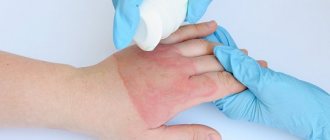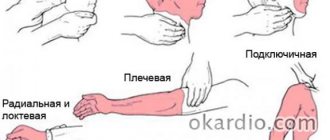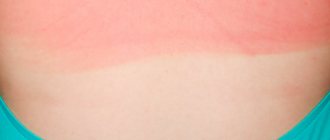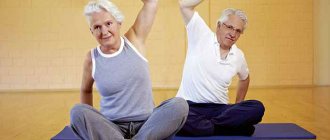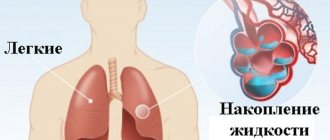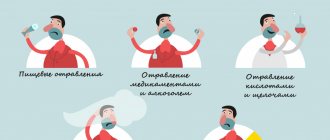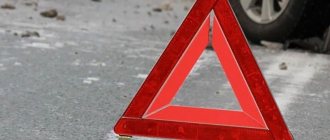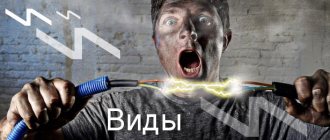First aid is a set of measures aimed at maintaining life and health, provided before providing medical assistance to citizens in case of accidents, injuries, poisoning and other conditions and diseases that threaten their life and health, by persons obliged to provide first aid in accordance with federal law or with a special rule and with appropriate training, including employees of the internal affairs bodies of the Russian Federation, employees, military personnel and employees of the State Fire Service, rescuers of emergency rescue units (ARF) and emergency rescue services (ARS).
In addition to the above persons, vehicle drivers and other persons have the right to provide first aid if they have appropriate training and (or) skills.
First aid
Purpose of first aid
International first aid symbol
The purpose of first aid is to eliminate life-threatening phenomena, as well as to prevent further damage and possible complications.
The time from the moment of injury to receiving first aid, including medical care, should be extremely shortened (the “golden hour” rule).
Some sad statistics
Practical experience shows the real possibility of saving the lives of 20 out of 100 dead people, provided that first aid is provided to them in a timely manner where the accident occurred. If help is absent for an hour or more, the mortality rate increases significantly:
- 60 or more minutes - 30%;
- three hours or more - 60%;
- six hours or more - 90%.
Thus, the number of deaths approximately doubles, so you need to act quickly and correctly. First of all, measures should be aimed at eliminating a life-threatening factor, for example:
- pull the victim out of the water;
- carefully remove people from under a collapse, rubble, etc.;
- remove or remove victims from a place affected by a toxic chemical agent;
- remove a person from a car, etc.
A correct assessment of the condition in which the victim is is also equally important. It must be determined whether the person is alive or already dead. In the living, the severity of the lesion and general condition, as well as the intensity of bleeding, if any, are determined.
List of conditions for which first aid is provided
In accordance with the order of the Ministry of Health and Social Development of the Russian Federation dated May 4, 2012 No. 477n, first aid is provided for the following conditions:
- Lack of consciousness.
- Stopping breathing and blood circulation.
- External bleeding.
- Foreign bodies of the upper respiratory tract.
- Injuries to various areas of the body.
- Burns, effects of exposure to high temperatures, thermal radiation.
- Frostbite and other effects of exposure to low temperatures.
- Poisoning.
List of first aid measures
In accordance with the same order, in the specified conditions, the following measures are carried out:
1. Measures to assess the situation and ensure safe conditions for providing first aid:
- Identification of threatening factors for one’s own life and health.
- Determination of threatening factors for the life and health of the victim.
- Elimination of threatening factors for life and health.
- Termination of the action of damaging factors on the victim.
- Estimation of the number of victims.
- Removing the victim from a vehicle or other hard-to-reach places.
- Relocation of the victim.
On this topic ▼
How to call an ambulance or intensive care unit correctly
2. Calling an ambulance or other special services, whose employees are required to provide first aid in accordance with federal law or a special rule.
3. Determining whether the victim has consciousness.
4. Measures to restore airway patency and determine signs of life in the victim:
- Throwing back the head with lifting the chin.
- Advancement of the lower jaw.
- Determining the presence of breathing using hearing, vision and touch.
- Determining the presence of blood circulation, checking the pulse in the main arteries.
5. Measures to carry out cardiopulmonary resuscitation until signs of life appear:
- Hand pressure on the victim's sternum.
- Artificial respiration "Mouth to mouth".
- Artificial respiration "Mouth to nose".
- Artificial respiration using a breathing device*.
6. Measures to maintain airway patency:
- Giving a stable lateral position.
- Throwing back the head with lifting the chin.
- Advancement of the lower jaw.
7. Measures for a general examination of the victim and temporary stop of external bleeding:
- General examination of the victim for bleeding.
- Finger pressure of the artery.
- Application of a tourniquet.
- Maximum flexion of the limb at the joint.
- Direct pressure on the wound.
- Applying a pressure bandage.
8. Measures for a detailed examination of the victim in order to identify signs of injuries, poisoning and other conditions that threaten his life and health, and to provide first aid if these conditions are identified:
On this topic ▼
Providing first aid depending on the situation
- Carrying out a head examination.
- Carrying out a neck examination.
- Performing a breast examination.
- Conducting a back examination.
- Carrying out an examination of the abdomen and pelvis.
- Conducting an examination of the extremities.
- Application of bandages for injuries to various areas of the body, including occlusive (sealing) for injuries to the chest.
- Carrying out immobilization (using improvised means, autoimmobilization, using medical devices*).
- Fixation of the cervical spine (manually, with improvised means, using medical devices*).
- Stopping the victim from exposure to hazardous chemicals (gastric lavage by drinking water and inducing vomiting, removing from the damaged surface and rinsing the damaged surface with running water).
- Local cooling for injuries, thermal burns and other effects of high temperatures or thermal radiation.
- Thermal insulation against frostbite and other effects of low temperatures.
9. Giving the victim an optimal body position.
10. Monitoring the victim’s condition (consciousness, breathing, blood circulation) and providing psychological support.
11. Transfer of the victim to an ambulance team and other special services, whose employees are required to provide first aid in accordance with federal law or a special rule.
Note: * – in accordance with the approved requirements for the provision of first aid kits (packs, kits, kits) with medical products for first aid.
Heimlich maneuver
When food or foreign bodies enter the trachea, it becomes blocked (fully or partially) and the person suffocates.
Signs of a blocked airway:
- Lack of full breathing. If the windpipe is not completely blocked, the person coughs; if completely, he holds on to the throat.
- Inability to speak.
- Blue discoloration of facial skin, swelling of neck vessels.
Airway clearance is most often carried out using the Heimlich method.
- Stand behind the victim.
- Grasp it with your hands, clasping them together, just above the navel, under the costal arch.
- Press firmly on the victim's abdomen while sharply bending your elbows.
Do not squeeze the victim's chest, with the exception of pregnant women, for whom pressure is applied to the lower chest.
- Repeat the dose several times until the airways are clear.
If the victim has lost consciousness and fallen, place him on his back, sit on his hips and press on the costal arches with both hands.
To remove foreign bodies from the child’s respiratory tract, you need to turn him on his stomach and pat him 2-3 times between the shoulder blades. Be very careful. Even if your baby coughs quickly, consult a doctor for a medical examination.
Grasp the victim from behind under the costal arch
Apply firm pressure to the victim's abdomen
If the person is unconscious, sit on their hips and use both hands to apply pressure to their costal arches.
First aid algorithm
| Algorithm point | Response measures | Term |
| 1. | Assess the situation and provide safe conditions for providing first aid: 1) identify threatening factors for their own life and health; 2) identify threatening factors for the life and health of the victim; 3) eliminate threats to life and health; 4) stop the effect of damaging factors on the victim; 5) estimate the number of victims (if necessary); 6) remove the victim from the vehicle or other hard-to-reach places (if necessary); 7) move the victim (if necessary). | Determined depending on the circumstances of the incident |
| 2. | Determine whether the victim is conscious. If consciousness is present, proceed to step 7 of the Algorithm; in the absence of consciousness, proceed to step 3 of the Algorithm. | 5 second |
| 3. | Restore airway patency: 1) tilt the head back with the chin raised; 2) extend the lower jaw. | 2 seconds |
| Determine signs of life: 3) determine the presence of normal breathing using hearing, vision and touch; 4) determine the presence of blood circulation by checking the pulse in the main arteries (simultaneously with the determination of respiration and with appropriate preparation). If there is breathing, proceed to step 6 of the Algorithm; if there is no breathing, go to step 4 of the Algorithm. | 10 Seconds | |
| 4. | Call emergency medical services and other special services, whose employees are required to provide first aid in accordance with federal law or with a special rule (by calling “03”, “103” or “112”, involving an assistant or using the speakerphone on the phone). | 1 minute |
| 5. | Basic cardiopulmonary resuscitation begins by alternating: 1) manual pressure on the victim’s sternum; 2) artificial respiration “Mouth to mouth” or “Mouth to nose” using artificial respiration devices<*>. When signs of life appear, proceed to step 6 of the Algorithm. | Until signs of life appear, emergency medical services or other special services arrive, whose employees are required to provide first aid in accordance with federal law or with a special rule, or until you feel tired enough to continue cardiopulmonary resuscitation |
| 6. | When signs of life appear (presence), measures are taken to maintain airway patency in one or more ways: 1) give a stable lateral position; 2) throw back the head with a lift of the chin; 3) extend the lower jaw. | 20 seconds |
| 7. | Conduct a general examination of the victim and carry out measures to temporarily stop external bleeding in one or more ways: 1) direct pressure on the wound; 2) finger pressure of the artery; 3) applying a pressure bandage; 4) maximum flexion of the limb at the joint; 5) applying a tourniquet. | Determined by the presence and type of bleeding, as well as methods to stop it |
| 8. | Conduct a detailed examination of the victim in order to identify signs of injuries, poisoning and other conditions that threaten his life and health, call an ambulance (if it has not been called earlier) and carry out first aid measures: 1) conduct an examination of the head; 2) conduct an examination of the neck; 3) conduct a breast examination; 4) conduct a back examination; 5) conduct an examination of the abdomen and pelvis; 6) conduct an examination of the limbs; 7) apply bandages for injuries to various areas of the body, including occlusive (sealing) for injuries to the chest; carry out immobilization (using improvised means, autoimmobilization, using medical devices<*>); 9) fix the cervical spine (manually, with improvised means, using medical devices<*>); 10) stop the impact of hazardous chemicals on the victim (wash the stomach by drinking water and inducing vomiting, remove from the damaged surface and wash the damaged surface with running water); 11) carry out local cooling in case of injuries, thermal burns and other effects of high temperatures or thermal radiation; 12) carry out thermal insulation for frostbite and other effects of exposure to low temperatures. 2) conduct an examination of the neck; 3) conduct a breast examination; 4) conduct a back examination; 5) conduct an examination of the abdomen and pelvis; 6) conduct an examination of the limbs; 7) apply bandages for injuries to various areas of the body, including occlusive (sealing) for injuries to the chest; carry out immobilization (using improvised means, autoimmobilization, using medical devices<*>); 9) fix the cervical spine (manually, with improvised means, using medical devices<*>); 10) stop the impact of hazardous chemicals on the victim (wash the stomach by drinking water and inducing vomiting, remove from the damaged surface and wash the damaged surface with running water); 11) carry out local cooling in case of injuries, thermal burns and other effects of high temperatures or thermal radiation; 12) carry out thermal insulation for frostbite and other effects of exposure to low temperatures. | Determined by the presence and nature of injuries, poisoning and other conditions requiring first aid |
| 9. | Give the victim an optimal body position. | 1 minute |
| 10. | Constantly monitor the condition of the victim (presence of consciousness, breathing and blood circulation) and provide psychological support. | Determined by the time of arrival of the ambulance team |
| 11. | The victim is transferred to the emergency medical team and other special services, whose employees are required to provide first aid in accordance with federal law or with a special rule upon their arrival, and provide the necessary information. | 1 minute |
Note: <*> - in accordance with the approved requirements for equipping first aid kits (packs, kits, kits) with medical products for first aid, including in accordance with the order of the Ministry of Health and Medical Industry of Russia dated August 20, 1996 No. 325, orders of the Ministry of Health and Social Development of Russia dated March 5, 2011 No. 169n, dated August 10, 2011 No. 905n, dated August 11, 2011 No. 907n, dated May 5, 2012 No. 498n, orders of the Ministry of Health of Russia dated October 10, 2012 No. 408n, dated February 8 2013 No. 61n, dated February 15, 2013 No. 70n, dated June 27, 2014 No. 333n.
Universal first aid algorithm
The algorithm diagram is available in higher quality by clicking on the “Download” after the article.
Fainting
Fainting is a sudden loss of consciousness caused by a temporary disruption of cerebral blood flow. In other words, this is a signal from the brain that it does not have enough oxygen.
It is important to distinguish between normal and epileptic syncope. The first is usually preceded by nausea and dizziness.
A pre-fainting state is characterized by the fact that a person rolls his eyes, breaks out in a cold sweat, his pulse weakens, and his limbs become cold.
Typical situations of fainting:
- fright,
- excitement,
- stuffiness and others.
If a person faints, give him a comfortable horizontal position and provide fresh air (unfasten clothes, loosen belt, open windows and doors). Spray the victim's face with cold water and pat his cheeks. If you have a first aid kit on hand, give a cotton swab soaked in ammonia a sniff.
If consciousness does not return within 3–5 minutes, call an ambulance immediately.
When the victim comes to his senses, give him strong tea or coffee.
Safety rules for first aid
Compliance with personal safety rules and ensuring safe conditions for providing first aid (possible risk factors, their elimination)
Before starting action at the scene of an incident, ensure a safe environment for providing first aid. At the same time, it is necessary to remember what may threaten the participant in providing first aid, the victim and eyewitnesses of the incident:
- electric shock;
- heavy traffic;
- possible fire or explosion;
- damage by toxic substances;
- aggressive people;
- high probability of collapse of the building or any structures;
- animals, etc.
To reduce the risk of injury, it is necessary, for example, to turn off the electricity, turn off the household gas, install emergency stop signs, block the roadway with a car, try to put out the fire, inform the gathered people that first aid will now be provided, etc. First aid should not be attempted in adverse conditions. In this case, you should contact the appropriate authorities (for example, emergency services, police, etc.).
The simplest measures to prevent infectious diseases transmitted through direct contact with a person, his blood and other biological fluids
To reduce the risk of infection when providing first aid, you should use medical gloves (to protect your hands) and mouth-to-mouth protective devices for artificial respiration, found in first aid kits. Currently, devices for artificial respiration of various designs are produced in Russia. The rules for their use can be found in the instructions supplied by the manufacturer of each specific device.
The first aid kit for workers includes 3-layer medical masks made of non-woven material, which are used to reduce the risk of infection to the person providing first aid.
If blood or other biological fluids get on your skin, you should immediately wash them off with running water and wash your hands thoroughly. If you have alcohol-based antiseptic wipes made of paper textile-like material (found in the first aid kit for workers), it is necessary to treat the skin with their help.
After performing artificial respiration, it is recommended to rinse your mouth.
What diseases can be treated at home?
Recently, advertising of medicines on TV and in other mass media has contributed to the formation of the belief that almost all diseases can be treated at home independently. However, this is not entirely true. Many doctors and specialists argue that self-medication can lead to an exacerbation of the disease, prevent a correct diagnosis, and cause adverse reactions [The Recovery Village, 2020].
Unlike Russia, pharmacies in the USA and some Western European countries dispense up to 90% of medications only with a prescription. This does not mean that every time you have a headache you need to go to the doctor, however, when self-medicating, you should adhere to the “do no harm” principle. Always carefully read the instructions for the purchased drug and use medications purchased on your own only to treat those diseases whose symptoms you are absolutely sure of (colds, mild sprains, rhinitis, diarrhea). Otherwise, self-medication can lead to undesirable consequences and harm your health.
According to statistics, every year around the world about 650 thousand people die from the same flu [Rosstat, 2020]. Once you feel the first symptoms of the disease, you can begin treatment at home. It has been proven that taking vitamin C, although it does not reduce the risk of getting a cold, shortens the duration of the disease and makes it easier to bear [WebMD, 2019]. Medications such as paracetamol or ibuprofen will help relieve fever. But if treatment does not produce results, and the condition worsens (the temperature rises, the cough does not go away), you should definitely seek help from a doctor.
You can also treat minor bruises, sprains, and sprains at home. They are usually fairly easy to tolerate, causing only minor pain and discomfort. If the skin at the site of dislocation or sprain does not change color, and the injury is not accompanied by swelling, it is enough to fix the site of injury and apply cold ice, providing the damaged area with rest without loading it. This recommendation should be taken with a grain of salt, and if there is a possibility of more serious injury, you should immediately seek specialized help, after following the rules described above.
Here we would like to give several important rules that should be followed when self-medicating :
| 1 | Rule 1. You can only treat easily tolerated diseases yourself. |
| 2 | Rule 2. If there is no improvement in the condition within 3 days, you need to seek qualified help at the hospital. |
| 3 | Rule 3. Before buying a drug, try to find out as much as possible about its action, contraindications, and side effects. An initial certificate can be obtained from a pharmacist at a pharmacy. |
| 4 | Rule 4. It is not recommended to resort to self-medication during pregnancy, in relation to infants and elderly people, as well as in cases of severe chronic diseases. |
There are many situations in which first aid is needed. Let's talk about the most popular of them. Please note that all the following information is taken from official sources, such as the website of the Russian Ministry of Emergency Situations, the website of the All-Russian Center for Emergency and Radiation Medicine named after A. M. Nikiforov, the website of the Firefighters and Rescuers Club, etc. and is in the public domain. If you wish, you can visit these resources and study the topic in more detail.
First aid video
Sources:
- First aid: a training manual for persons obliged and (or) entitled to provide first aid. –M.: FSBI “TsNIIOIZ” of the Ministry of Health of Russia, 2021.
- Article 31 “First aid” of the Federal Law of the Russian Federation of November 21, 2011 No. 323-FZ (as amended on July 2, 2021) “On the basics of protecting the health of citizens in the Russian Federation” (with amendments and additions, coming into force from October 1, 2021).
- Order of the Ministry of Health and Social Development of Russia dated May 4, 2012 No. 477n (as amended on November 7, 2012) “On approval of the list of conditions for which first aid is provided and the list of measures to provide first aid.”
